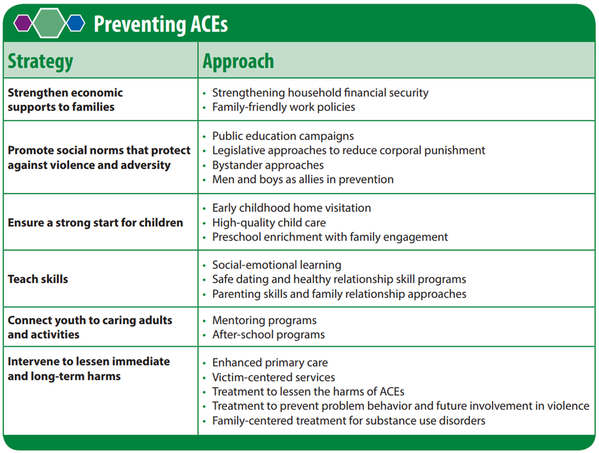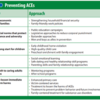The House of Representatives passed the Senate-amended version of the $1.9 trillion stimulus package—the American Rescue Plan (H.R. 1319)—on March 10, giving President Biden his first major legislative achievement. The phased-in increase in the federal minimum wage to $15 by 2025 was dropped prior to Senate consideration because the parliamentarian ruled it was not consistent with budget reconciliation rules.
President Biden will address the nation on Thursday evening (8:00 ET) to mark the one-year anniversary of the COVID pandemic and will lead a multi-state tour to explain the benefits of the package to the American people. Vice President Kamala Harris and members of the Biden cabinet, along with Democratic members of Congress, are also part of the blitz to promote the bill. Building support for the bill provides a foundation for making temporary provisions such as the child tax credit permanent.
The final version of the American Rescue Plan passed the House by a vote of 220-211 with one Democratic defection and no Republican support. The Senate vote (50-49 with one Republican absent) took place on Saturday after hours of debate and amendments. President Biden will sign the bill on Thursday at 1:30 ET at the White House.
Several key recommendations align with policy options long supported by child and family advocates prior to the pandemic, creating pressure to make some proposals permanent. The original document laying out the American Rescue Plan said it “will address the stark, intergenerational inequities that have worsened in the wake of COVID-19. Researchers at Columbia University estimate that these proposals will cut child poverty in half.” In a sense, the child tax credit that begins July 1, 2021 and expires at the end of the year will be a pilot for a children’s income guarantee, a proposal that has gained support over decades based in part on what science has revealed about the negative impact of deprivation in early childhood.
A March 8 article in the New York Times cites a 2019 National Academies of Sciences, Engineering and Medicine studyas providing evidence of the importance of fighting poverty in early childhood. The study “showed that even short stints in poverty could cause lasting harm, leaving children with less education, how adult earning and worse adult health.” It found that “poverty itself causes negative child outcomes” and that income subsidies “have been shown to improve child well-being.” The 2019 National Academies study cites the ACE Study and subsequent research as evidence for this finding.
There are enormous challenges ahead for the federal agencies that are implementing this far-reaching law in record time (see the March 10 Washington Post article “Stimulus threatens to swamp agencies”) but similar challenges will fall to states, localities, tribes, school districts, etc. Advocates for children and families, including activists in trauma-informed networks around the country, have a key role to play in ensuring the stimulus dollars are spent in ways that benefit the intended recipients in the most consequential way. Three specific areas (not limited to) where advocates could have a significant impact are in child care/Head Start, Behavioral Health Services, and Education (see these section below in Highlights).
Highlights of the American Rescue Plan for Child & Family Advocates
Here are some highlights of the American Rescue Plan that “would strengthen economic supports to families and ensure a strong start for children (see CDC’s “Preventing ACEs: Leveraging the Best Available Evidence)”:

Expands Income Supports
—Make the Child Tax Credit fully refundable and increases its size for 2021
A study by Columbia University found that such a proposal would cut the child poverty rate in the United States in half. The current $2,000 per child would increase to $3,000 per child ($3,600 for a child under age 6). Currently, because the child tax credit is not fully refundable, there are 27 million American children who do not receive the full value of the current $2,000 tax credit because their parents do not earn enough money. The bill directs the Secretary of the Treasury to issue advance payments of the child tax credit, based on the parents’ 2019 or 2020 tax returns. Under the bill, parents would receive a monthly advance payment of $250 per child (and $300 per child under age 6). It would extend the credit to 17-year-olds. The advance payments would begin on July 1, 2021.
According to the Center for Budget and Policy Priorities, the credit would cut child poverty by 40% (See “House Package Would Help Millions and Bolster the Economy”). Another study by Columbia University found that such a proposal would cut the child poverty rate in the United States in half.
—Raises the maximum Earned Income Tax Credit (EITC),
The EITC is raised for childless adults from roughly $530 to close to $1,500, raises the income limit for the credit from about $16,000 to about $21,000, and eliminates the age cap for older workers for 2021. This step will benefit more than 17 million low-income workers.
—Provides direct payments of $1,400 added to the already provided $600, bringing the total to $2,000.
Single tax filers with incomes up to $75,000, head of household filers with incomes up to $112,500, and joint filers with incomes up to $150,000 will receive the full payment of $1,400.
—Extends unemployment benefits
Currently, Federal Unemployment Benefits Expire on March 14: Specifically, both the federal supplemental unemployment benefit (FPUC) and the Pandemic Unemployment Assistance (PUA) Program (which provides unemployment benefits to some self-employed and pandemic-affected individuals who do not qualify for regular state unemployment benefits) expire on March 14.
- The Senate-passed bill extends the Federal Pandemic Unemployment Compensation (FPUC) through September 6, while keeping the weekly benefit at the current $300 per week. It also exempts up to $10,200 in unemployment benefits received in 2020 from federal income taxes for households making less than $150,000.
- The bill also extends both the Pandemic Unemployment Assistance (PUA) program and the Pandemic Emergency Unemployment Compensation (PEUC) program through September 6.
—Providing additional funding for TANF (Temporary Assistance for Needy Families)
Provides an additional $1 billion for states to cover the additional cash assistance that Temporary Assistance for Needy Families (TANF) recipients needed as a result of the economic crisis.
Expands Child Care Support and Head Start
—Provides support for child care
- Makes a Number of Improvements in the Child and Dependent Care Tax Credit, for 2021: The bill makes several improvements to the Child and Dependent Care Tax Credit for 2021, including increasing the amount of child and dependent care expenses that are eligible for the credit to $8,000 for one qualifying individual and $16,000 for two or more qualifying individuals (such that the maximum credits would now be $4,000 and $8,000).
- Provides $39 Billion in supplemental funding for child care, which will help child care providers keep their doors open and reduce costs for struggling families. Funding is provided through the Child Care and Development Block Grant for providers.
- Increases the Annual Funding Level for the Child Care Entitlement to States. The bill increases the annual funding level for the Child Care Entitlement to States, from $2.917 billion per year to $3.550 billion per year. It also waives the state match requirement for funds for fiscal years 2021 and 2022.
—Provides $1 Billion in emergency funding for Head Start, which will be used to maintain access to services for children and families.
Expands health coverage
- New Incentives for Medicaid Expansion: The bill provides a new incentive for the 12 states that have not expanded Medicaid to do so by temporarily increasing the base Federal Medical Assistance Percentage (FMAP) by five percentage points for two years for any state that newly expands. If all 12 remaining states expanded Medicaid, more than 2 million uninsured people would gain access to Medicaid.
- COBRA Subsidies: Provides a 100% subsidy for individuals who lose their job and choose to continue to use COBRA to continue their existing employer-sponsored health coverage through September 30, 2021. Currently, those who would like to choose COBRA are required to pay the full cost of their coverage, including the employer contribution, making the cost prohibitive and preventing many from doing so.
Expands Behavioral Health Services
Provides a total of $4 billion for expanding behavioral and mental health services. The bill specifically:
- Provides $1.5 billion for the Substance Abuse Prevention and Treatment block grant program.
- Provides $1.5 billion for the Community Mental Health block grant program.
- Provides $420 million for certified community behavioral health clinics.
- Provides $280 million for programs that support mental and behavioral health and prevent burnout among health care providers and public safety officers.
- Provides $120 million for Indian Health Service mental and behavioral health prevention and treatment programs.
- Provides $100 million for Health Resources and Services Administration (HRSA) mental health services.
- Provides $80 million specifically for the Pediatric Mental Health Care Access Program at HRSA.
Provides support for education
The bill provides support for elementary, secondary, and higher education by providing:
- Nearly $130 Billion for the Elementary and Secondary School Emergency Relief Fund, which will give states and schools the resources they need to reopen safely for in-person instruction and address significant impact of the pandemic on students’ education and well-being. This includes:
- Repairing ventilation systems, reducing class sizes and implementing social distancing guidelines, purchasing personal protective equipment, and hiring support staff to care for students’ health and well-being.
- Ensures 20 percent of the funding that schools receive must be reserved to address and remediate learning loss among students.
- Includes several new provisions added by the Senate related to K-12 funding:
- Requires states to award K-12 funds to local school districts no later than 60 days after receipt and school districts to develop plans that ensure schools return to in-person learning;
- Dedicates $800 million to help meet the needs of homeless young people;
- Funds evidence-based summer enrichment at $1.3 billion and afterschool support initiatives also at $1.3 billion;
- Allocates $3 billion for Individuals with Disabilities Education Act (IDEA); and
- Provides $2.75 billion for states to award grants to private K-12 schools.
- $40 Billion for the Higher Education Emergency Relief Fund,which is awarded directly to institutions of higher education. At least half of the funding institutions receive must be distributed to students in the form of emergency grants to prevent hunger, homelessness, and other hardships caused by COVID-19. The final bill includes a provision to close the 90-10 loophole abused by predatory for-profit institutions, but now delays implementation until Oct. 1 and applies in FY 2023.
There is also a fact sheet provided by the Education and Labor Committee that gives a state-by-state breakdown of allocations for emergency education and child care funding. The fact sheet is based on an earlier version of the stimulus bill but the funding levels for the major spending categories are the same as those in the final bill.

Comments (0)